Last Updated on August 2, 2024
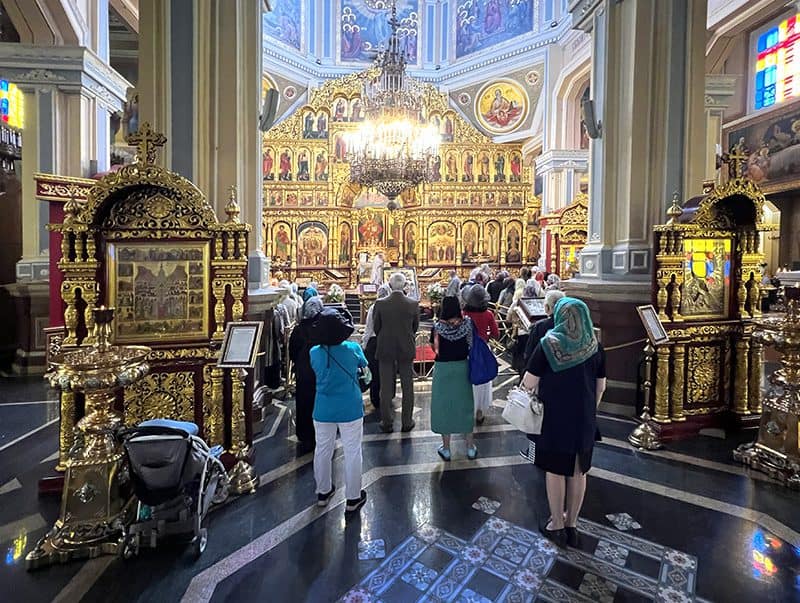
By Jim Ferri
I recently returned from a very interesting trip to Almaty, Kazakhstan.
Kazakhstan is one of the old Soviet republics that split off after the collapse of the Soviet Union in 1991. Although geographically considered to be in Central Asia, it stretches all the way from Eastern Europe to China. Visitors to Kazakhstan today are mainly from Hong Kong, Taiwan, Europe, and Australia.
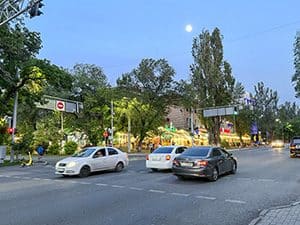
I found Kazakhstan to be a unique experience, especially for travelers from North America. Likely, as I did, you’ll find that it differs considerably from your experiences in other European or Asian countries.
Tourism is quite new in Kazakhstan. My trip, taken with ten other U.S. and Canadian travel bloggers, was jointly sponsored by USAID and Kazakh Tourism. Its purpose was to make North American travelers more aware of the Kazakhstan tourism experience. Based on my personal experience, it’s a fascinating country that may be one of interest to you, as well.
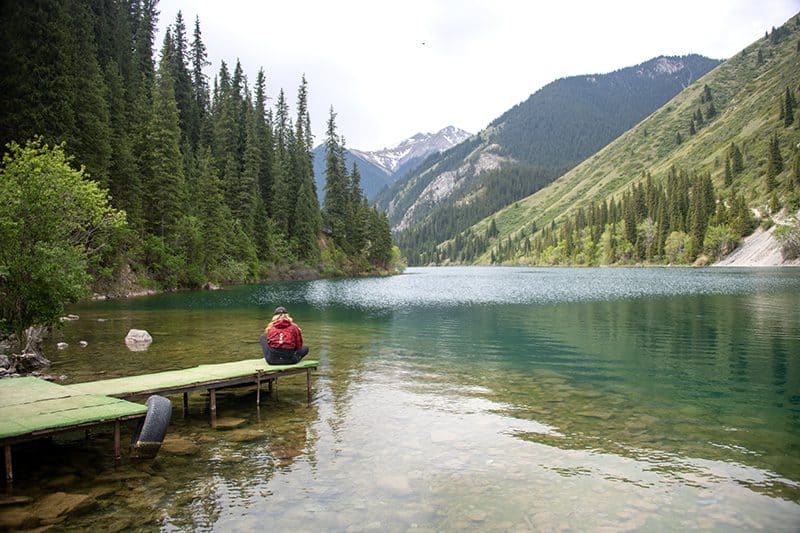
A Big Country
Kazakhstan is a big country – the 9th largest in the world, size-wise, right behind Australia, India, and Argentina. In addition to its size, Kazakhstan is unique in other ways, including historically having a nomadic culture.
Our base for exploring was Almaty, its largest city. It’s a great city to use as a base and from which to take day trips into the surrounding countryside where there’s a lot to do and see.
Almaty can trace its roots back to the Bronze Age. From 700 BC to 100AD, it was also an educational center, which appears to have taken root since there are 35 universities in Almaty today. And during the 10th-14th centuries, the city and its surrounding area were part of the Silk Road.
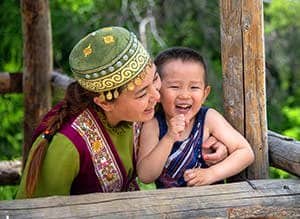
But there’s much more of interest in Almaty and Kazakhstan than history. Most notable is that it has an exceptionally friendly population. It’s also much less expensive than many other destinations to which you’ve likely traveled. (The exchange rate is approximately 440 Kazakhstani Tenge to the U.S. dollar). In fact, you can enjoy a gourmet meal in a good restaurant in Almaty for a fraction of what you’d pay in most other world capitals.
In addition, the language barrier isn’t as challenging as one might expect. Everyone doesn’t speak English, but it is compulsory in schools. And with the Kazaks being so friendly, there’s usually no problem. The first day I was in Almaty, a teenager rode by on his bike and called over, “Welcome to Kazakhstan!”
You can avoid any language issues, of course, by hiring a local guide during your visit. That’s also a good idea if you travel outside Almaty, which I highly recommend.
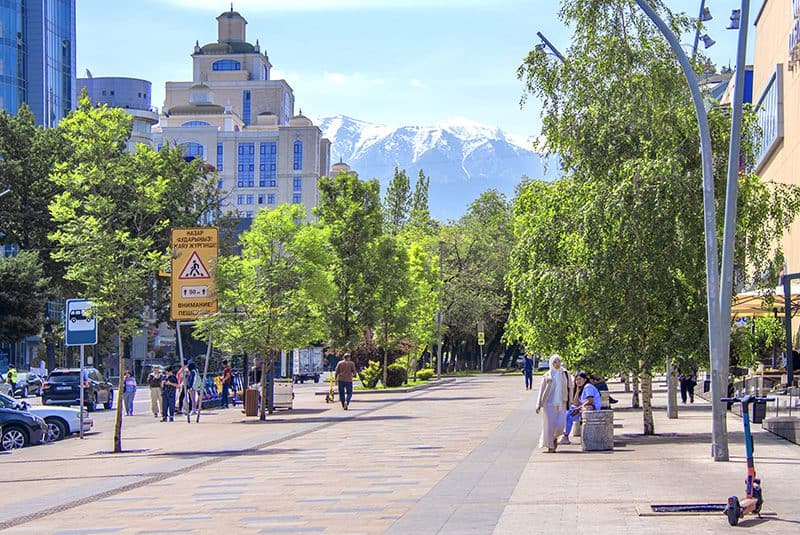
Almaty, the Beautiful Old Capital of Kazakhstan
Almaty, the old capital of Kazakhstan, is a beautiful city. The word Almaty means “apple,” referring to the apple orchards that were once so prevalent in the area. Even today, while driving about the city, you’ll occasionally still see a small apple orchard tucked away in someone’s backyard, a pleasant surprise.
Another surprise was the city’s backdrop of snow-capped mountain peaks, dramatically reminiscent of Salt Lake City and Denver.
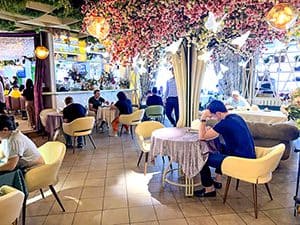
Today’s Almaty mixes old European/Soviet architecture and modern Western-style buildings. Among it all you find many modern shopping centers and hotels among mosques and Muslim-style architecture. I found its broad boulevards reminiscent of those in many French cities. Ditto for the many restaurants and boutiques that have taken root in old mansions around the city.
Many restaurants, at least those we visited, serve exceptional food. That, however, did not come as a surprise since Kazakhstan is world-renown for its cuisine, especially in Almaty. And while I found the coffee in our hotel relatively weak, there were several coffee cafes nearby that served more potent brews.
Almaty is also an exceptionally clean city, almost immaculate, in fact. During my visit, I never saw as much as a scrap of paper on the sidewalk. However, the other side of the coin is that you can’t yet drink the water. But we found that inconsequential since plenty of bottled water is offered at your hotel and in restaurants and shops.
The bottom line: there are enough things to see and enjoy in the city to keep you occupied for a few days. Wander further afield (recommended), and you’ll be pleasantly occupied for several more.
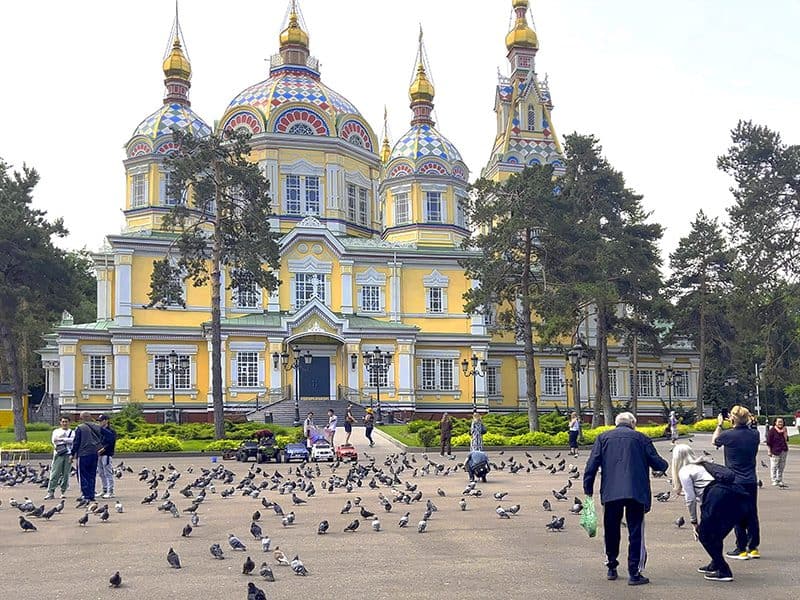
Almaty’s Beautiful Parks
When you’re visiting Kazakhstan you’ll see plenty of parks in Almaty, some sprawling, others little oases of green tucked away in a neighborhood. They’re all beautiful, serene places, many remnants of the old Soviet realm.
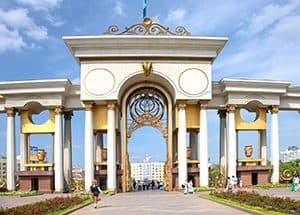
We visited several of them, including the Park of the First President and Republic Square. But for me, the standout was Panfilov.
The park is named for the Panfilov War Memorial, a large sculpture that’s the park’s focal point. It’s dedicated to 28 infantrymen who died while defending Moscow in World War 2. Paniflov was the unit’s commanding General. However, the story behind the statue may be a piece of propaganda elevated to national myth.
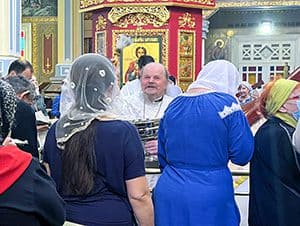
The park is more notable today for the 1907 Russian Orthodox Cathedral of the Holy Ascension. It’s known locally as Zenkov Cathedral, in deference to its architect, who made it earthquake-proof. Built without nails, it’s one of the tallest wooden buildings in the world (184 ft / 56 m).
You’ll find a rainbow of beautiful icons and frescos inside this magnificent cathedral. For a unique experience, visit when services take place. You’ll likely find it fascinating if you haven’t been to an orthodox service before.
Women need to cover their heads, but you’ll find scarves for temporary use at the door when you enter.
A Green Market and a Chocolate Factory
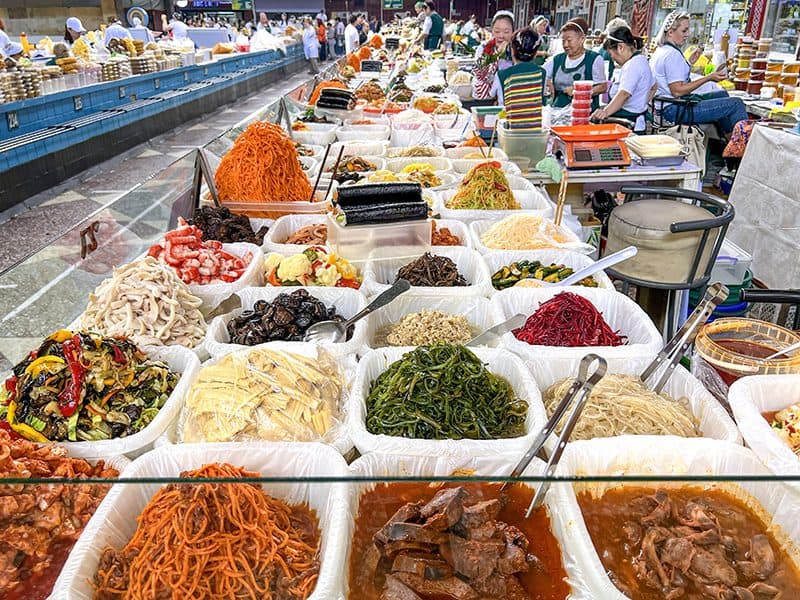
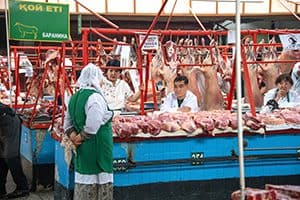
Wherever I travel, one of my “must stops” is always a local market or supermarket. Both provide insights into the local culture. In Kazakhstan I found plenty of those insights in Almaty’s colorful Green Market, locally known as the Green Bazaar.
Now almost 150 years old, it’s a vast place providing every type of food any Kazakhstani would want. There are also areas for clothes, shoes and all the other necessities of life. Its most famous market area, and probably the most photographed, is the butcher’s section selling horsemeat. Head for the butcher’s area and look for the placard with the outline of a horse on it.
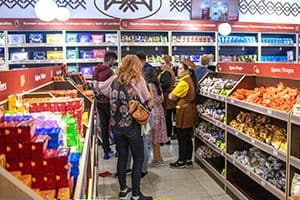
Also, visit the dairy section, where you’ll find horse and camel milk, among other foodstuffs. There are also sections with nuts, spices, herbs, and even a “medicine” section selling snakes, frogs, and crickets. If you’re a foodie, you could spend hours here sampling its products.
If you have a sweet tooth or are looking for a gift for one who does, you’ll find heaven just down the street in the Rahat Chocolate Factory. Just a five-minute walk from the market, its shop and showroom are minuscule compared to the massive Green Market, but it does a brisk business with the sweet-toothed.
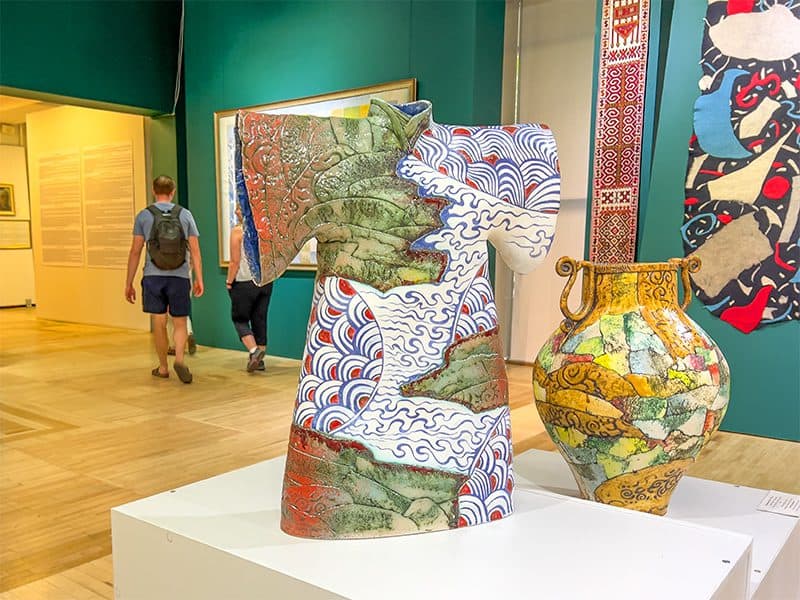
Central State Museum
Officially the Central State Museum of the Republic of Kazakhstan, this is the largest museum in Almaty, Kazakhstan. It’s also one of the largest museums in Central Asia, with a vast collection of 300,000 objects.
Although the present building is quite large, when the museum was established in 1931, it was in Almaty Cathedral. That allowed it to display only a small part of its collection. Today’s museum houses Kazakhstan’s most significant collection of historical, archaeological, and modern cultural and political artifacts.
It’s worth visiting for a few hours to learn more about Kazakhstan and its people. But you’ll need a guide, or you won’t understand what you’re looking at.
Kazakhstan Food and Two Top Almaty Restaurants
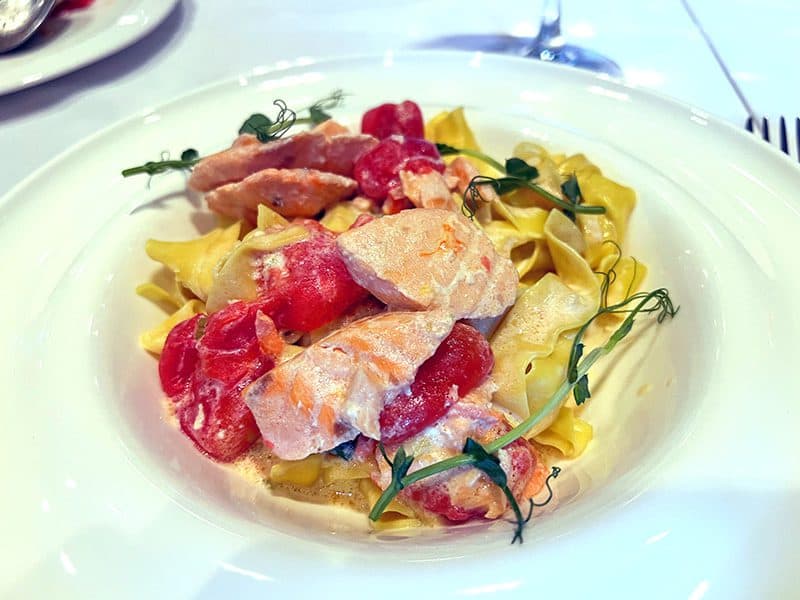
It’s said the national food of Kazakhstan can be summed up in one word: meat. It’s true.
And as you’ll find in many restaurants, that doesn’t necessarily mean cattle, although beef is sometimes used. While you’ll find a lot of lamb, most Kazakh meat comes from horses. And rarely will you find chicken.
If a country has a national dish, in Kazakhstan, it is Beshparmak. A dish of boiled meat (often lamb), it’s served with homemade noodles and broth on a large communal plate. Its name means “five fingers,” which is why traditionally one uses their hands to eat it.
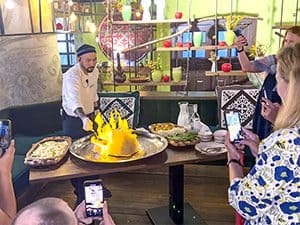
Lagman and Shashlyk are also popular dishes in restaurants. Chefs make lagman from long noodles, with meat (frequently beef without fat), and vegetables. Shashlyk is lamb on skewers.
Syren, a fried young lamb with onions and potatoes, is one of the most beloved Kazakh meat dishes. We enjoyed it at the Almaty restaurant Qaimaq, where the chef slow-roasted the lamb within a clay cover for five hours. After our arrival, he brought it out, smashed the cover, and flambéed the lamb. It was incredibly delicious.
Another over-the-top restaurant we enjoyed was Villa Dei Fiori. After our arrival, our small group was brought to a beautiful large dining room. We were all seated at one long table and served from a delicious pre-planned menu. It was a gourmet dinner on par with the best European and North American restaurants.
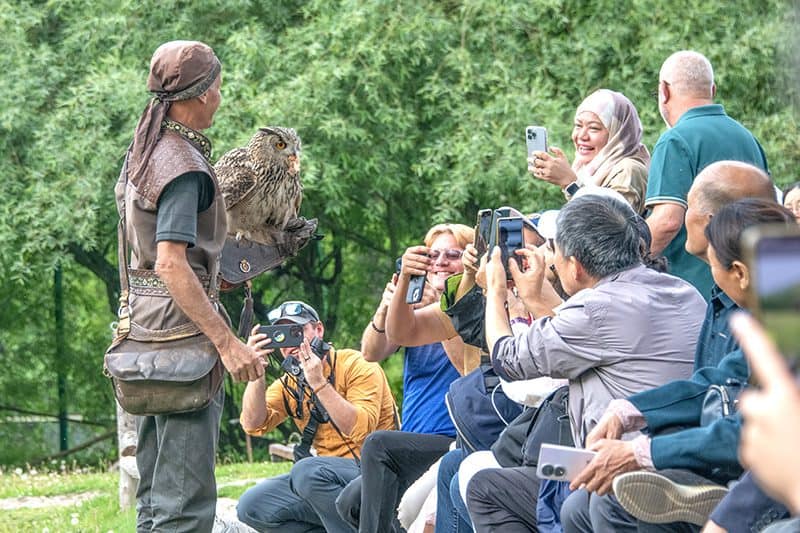
Sunkar Raptor Falcon Sanctuary Eagles
Since Kazakhstan is a large country with spectacular scenery, it is no surprise that it has 14 National Parks. One of them, Ile Alatau National Park, is on Almaty’s doorstep, less than five miles from the city. This National Park is beautiful, with spruce forests, alpine lakes, and waterfalls.
What it is best known for, though, is the Sunkar Raptor Falcon Sanctuary Eagles. The sanctuary is an important project since the number of Kazakhstan’s falcons are being decimated by poachers who sell them to wealthy Emirati in the Middle East.
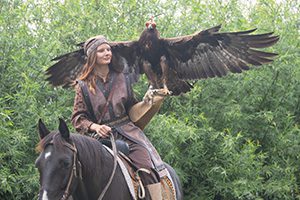
Six days a week in summer (it is not open Mondays), there is a birds-of-prey show at Sunkar. The show is put on by Paul Pfander, one of the leading bird handlers in Kazakhstan. Paul speaks English and has a great sense of humor, the latter sprinkled throughout his show commentary.
He and his assistant introduce you to owls, falcons, eagles, and more throughout the show. It’s informative, fun, and and up-close. It’s so up-close, in fact, that when one of Paul’s eagles glided back to him after being released, its wing brushed my head.
It’s a fantastic show you don’t want to miss. You can also see numerous other birds in the sanctuary, many in large cages.
Shows are in summer, 6 days a week (closed Monday) at 5pm. Entrance is 1000 tenge (approximately $2.50).
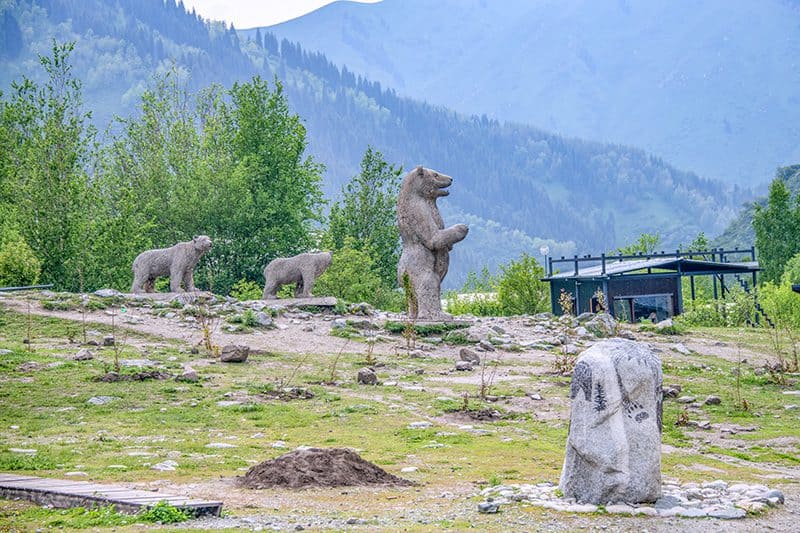
The Kazakhstan Countryside Right Outside Almaty
Traveling outside Almaty to a trio of Kazakhstan’s national parks, we found a beautiful countryside of broad fields with beautiful snow-capped mountains in the distance. I couldn’t help but feel it looked more like Austria or Switzerland than Central Asia.
As the hillsides morphed from rock and scrub to grass, we began seeing large herds of grazing sheep in the distance. At one time, as a flock was grazing near the highway, I remember my surprise at seeing that the flock was totally black. I’ve seen many sheep in my travels, but I’d never seen a black flock for some reason.
But I soon realized this wasn’t just sheep country. Further on, we passed a cowboy on his horse with three dogs trotting behind. In the distance, there was a herd of cattle grazing.
We’d often pass a row of neatly planted trees with white-painted trunks when nearing a home set back from the roadside. Everything looked so crisp and clean. Occasionally, one would see a grave or a small monument to a dignitary or local hero.
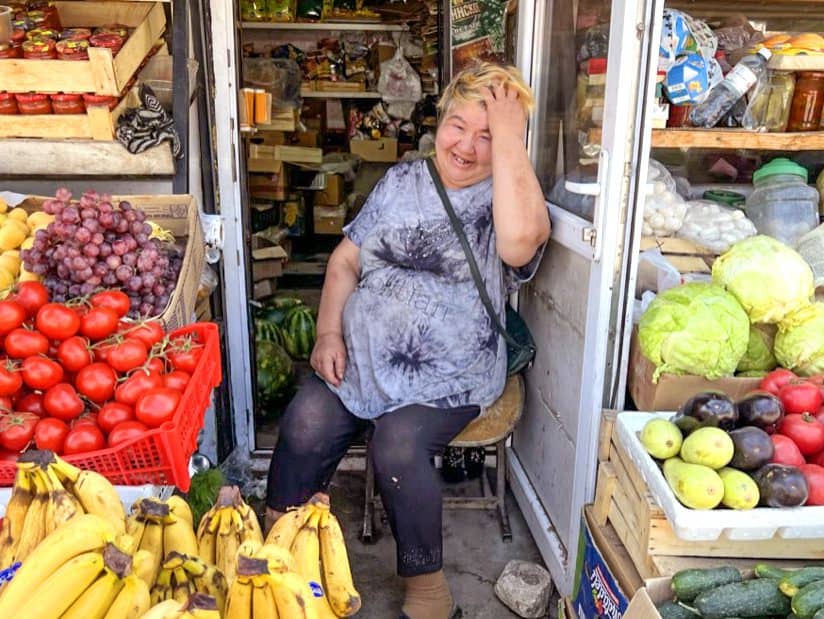
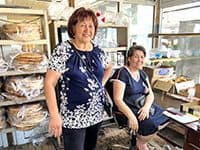
A Lunch Stop In a Local Village
Too often as we all travel, we rarely get a chance to meet any local people outside those who work in our hotel. That’s why I always like to break away from a group for a little while to see the real people of a place.
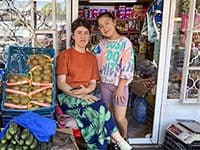
One day, about two hours or so from Almaty, we stopped for lunch at a restaurant in Baiseit, a Kazakhstan village on this picture-perfect plain.
Our lunch spot was a small restaurant, perfectly sized for locals and the occasional group of tourists passing through.
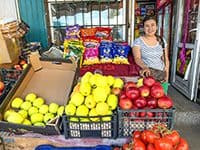
As I often do, however, I cut my meal short to wander over to meet local people and see them at work.
Baiseit’s local market, which I spied on the way in, was only a hundred yards or so up the road. It looked like the perfect place to “meet the locals.” I headed right over.
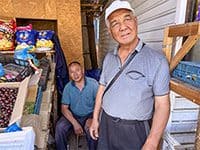
Walking along among the vegetables, bakery goods, and all the other assorted victuals, I met dozens of smiling shopkeepers in their little roadside shops.
I quickly became enamored by it all and decided to capture these wonderful people. I pulled out my phone and began asking to take photos of them in their little shops. Just about everyone obliged. Here are some of them.
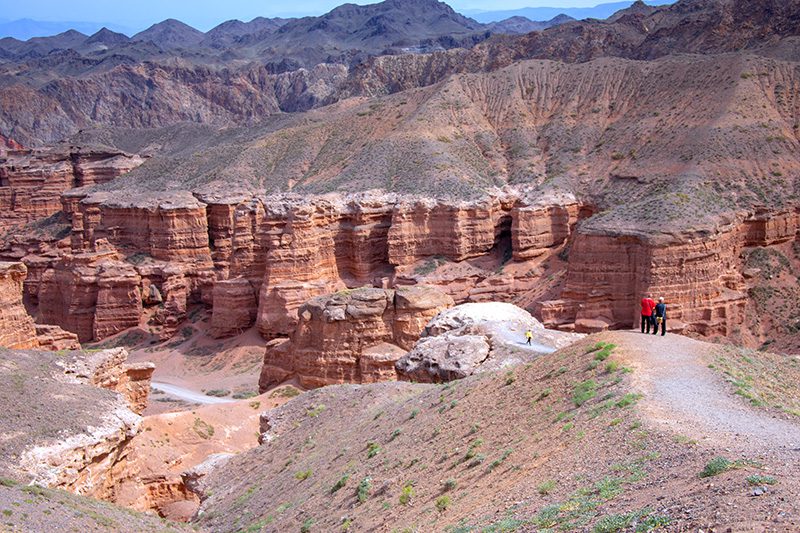
Charyn Canyon National Park
Given its size, it’s not unusual for Kazakhstan to have 14 National Parks. Each has an entrance fee of about US$1, which is quite inexpensive compared to North American and European parks. In addition to Ile Alatau, which we saw just outside Almaty, we also visited two more.
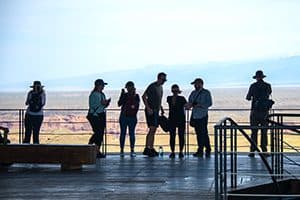
The first we saw was Charyn Canyon National Park, about 120 miles (200km) east of Almaty.( In retrospect, “see” is not quite what we did in any of these parks. “Experience” would be a better descriptor.)
Charyn Canyon is often described as “Kazakhstan’s Grand Canyon.” And although the size and depth don’t replicate its American counterpart, the similarity is immediately apparent.
It’s a beautiful place, carved from the landscape by the Charyn River over millions of years. If you’re inclined to get an up-close view, the hike to the canyon’s base is much less arduous than that of its American cousin. There are three “tourist routes” you can take with a guide or just as easily walk around on your own.
There’s also a small gift shop and a restaurant/café in the building where you enter, and a yurt out back.
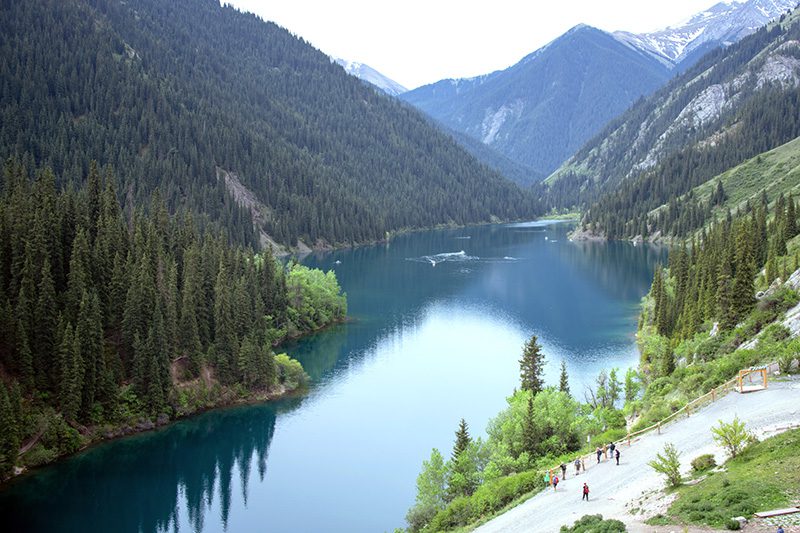
Kolsai Lakes National Park
The following day we set out for the spectacular Kolsai Lakes National Park. About 75 miles (120km) southeast of Almaty, this Kazakhstan park encompasses a beautiful Alpine landscape. Again, I couldn’t help but compare it to areas of Austria and Switzerland.
There are four lakes within the park, and we visited two of them. That’s sufficient time for most people unless you’re hiking or camping.
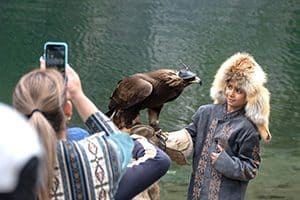
The lower lake is and is the first stop (or, in some cases, the only) for many visitors. It’s easily accessible, just a short walk from the parking lot. Take the path down to the lake, and you can rent peddle boats for a mini-cruise or just continue along the hiking path that begins at the dock.
In the other direction is Kaindy Lake, which is more arduous to access. Accessing it requires a four-wheel drive vehicle and/or horse, but it’s worth the effort, however, since it’s unique.
Kaindy is a relatively young lake formed in 1911 by a landslide of limestone rock. It attracts many visitors (and Instagrammers) since rising from its placid blue-green water like arboreal apparitions is a mini-forest of party-submerged spruce trees. It’s a beautiful site you’ll likely not see anywhere else.
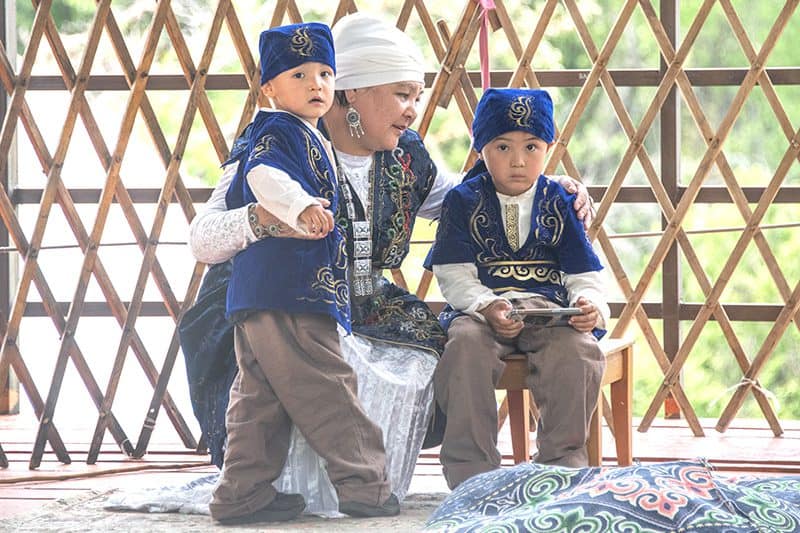
Huns Ethno Village
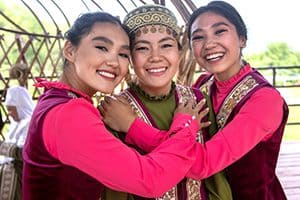
One of the things to do while in Almaty or, in fact, anywhere in Kazakhstan, is to visit the Huns Ethnic Village. It provides a fascinating glimpse into their nomadic ways centuries ago. It’s an easy drive, only about 20 miles outside the city, and is one of the most interesting things to do in Almaty.
Your visit begins when you arrive at the village’s front gate, which is a replica of an old wooden fort. You’re soon greeted by two men horsemen with spears in traditional nomadic “armor.” Soon joining them are young women in traditional dress who shower you with candy, a Kazakh wedding tradition to bring good luck.
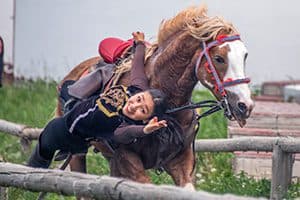
For the next few fascinating hours, you’ll learn more about everyday life of the Huns, including their music, customs, and even how to make Barak, the Kazakh puffy fried bread still served on special occasions.
Likely, you’ll find (as we did) the most exciting part of your visit is the horse-riding show. It’s an incredible demonstration of centuries-old customs and Kazakhstan horse-riding skills, including horseback acrobatics, wrestling while on horseback, and courtship customs.
The price for groups (a minimum of 10 people) is 20,000 KZT (approximately U.S.$45).
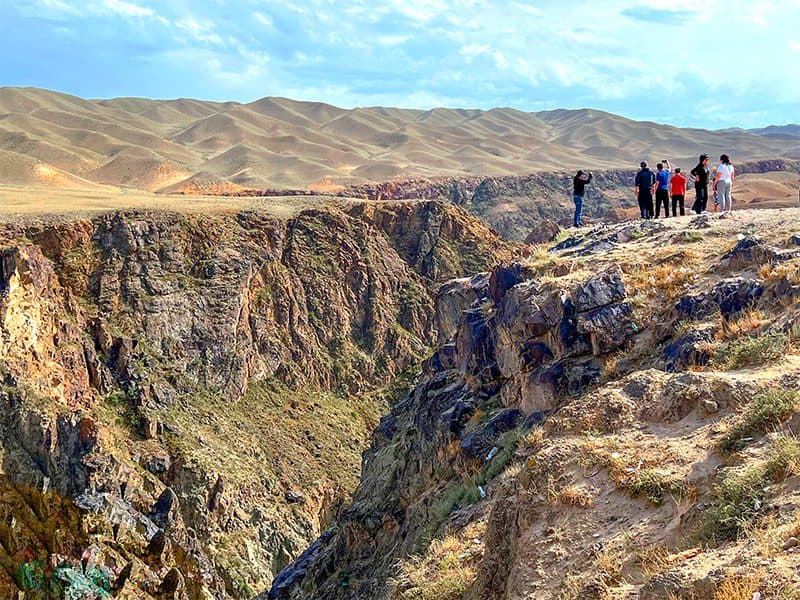
Black Canyon
We made a brief stop at Black Canyon on our return to Almaty from Kolsai Lakes and Kaindy Lake.
Black Canyon is not a National Park, but a beautiful deep, narrow canyon right along the roadside where you can pull over to park. Below you is a beautiful canyon of dark-colored hills and rock formations cut through by the Charyn River. Although not a designated NP, it still provides a “wow” factor and was a nice spot to take a break from the road.
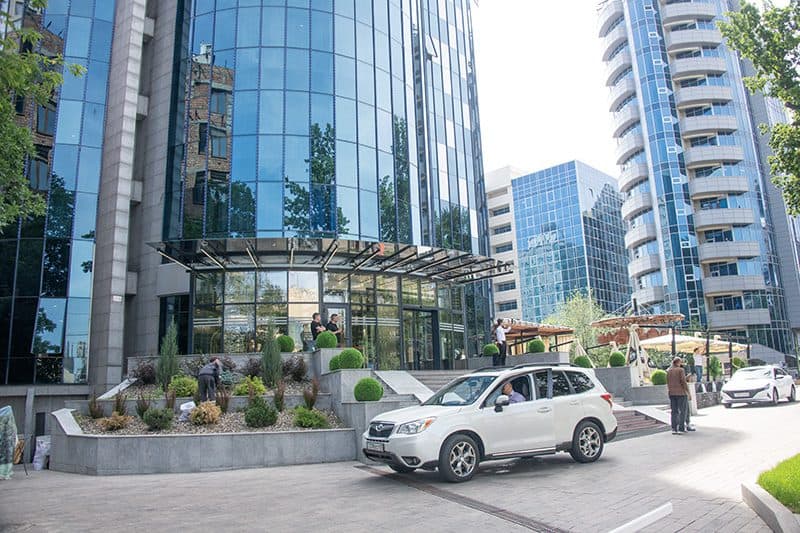
Hotels In Almaty, Kazakhstan
There are plenty of international hotel brands from which to choose in Almaty. They include Ritz Carlton, InterContinental, Holiday Inn, Novotel, Accor, Doubletree, Royal Tulip, and many more.
In Almaty, we stayed at the Grand Mildom Hotel in the city’s center. A new hotel, it was pretty comfortable, despite going through the usual growing pains of a new property, including adapting meals to foreign tastes…chicken wings for breakfast?

Almaty Transportation
Intracity bus transportation in Almaty is good with the cost of a single one-way ticket only 150 Tenge (about 34 U.S. cents). The subway is also clean, efficient and safe but there’s only one line, which runs east and west. It’s a good way to travel if your destination is near one of the stops so you’ll want to check with your hotel to see if it’s feasible. Cost is only 80 tenge (18 U.S. cents).
Do not travel by taxi unless it has been arranged by your hotel since there have been many robberies by drivers and their cohorts. This is especially true if you’re traveling into Almaty from the airport. Never take a taxi from the airport unless it has been prearranged by your hotel or tour agency.
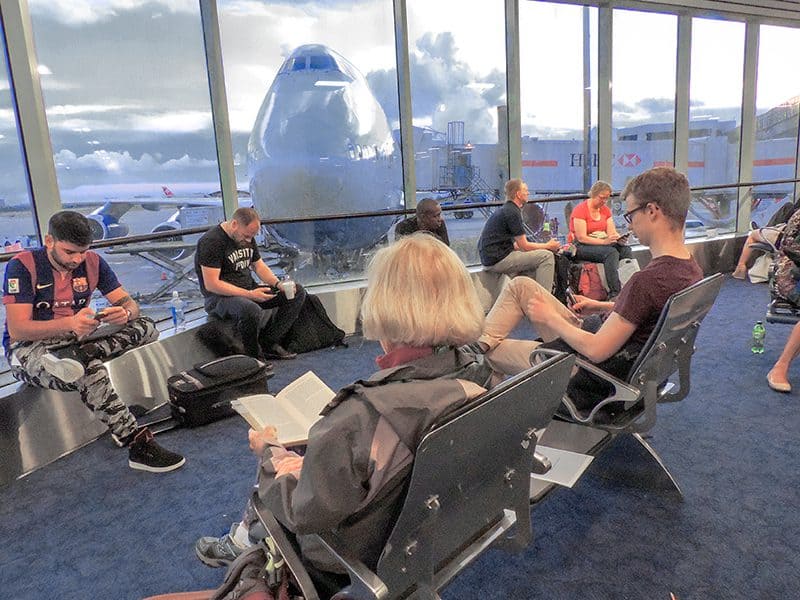
How To Get To Almaty, Kazakhstan
Almaty, Kazakhstan, unfortunately, is a long flight from North America.
In fact, due to the Russian war with Ukraine, flights from western Europe (where most U.S. and Canadian travelers connect with onward flights to Almaty) now detour over southern Europe for a 10-hour flight from Frankfurt. (Note that this is in addition to the 10-hour flight from North America to Frankfurt, for a total of 20 hours in the air each way).
It’s an exceptionally long flight that can be grueling in economy class. It’s well worth upgrading to Premium Economy or Business Class.
There is good news, however. You can mitigate that onerous flight time by visiting Kazakhstan while you’re in its neighborhood. Instead of flying from Germany, fly to Almaty while you’re in Istanbul, which is only a 5-hour flight. And the further east you go, the shorter the flight time: Qatar to Almaty is 4½ hours, Dubai about 4 hours, New Delhi 3¼ hours.
Most of the nonstop flights, which offer the shortest flight times, are on Air Astana, Kazakhstan’s national airline. And Air Astana has signed contracts for several new long-haul aircraft that will serve the North American market. They will further decrease travel time from the U.S. and Canada.

Leave a Reply